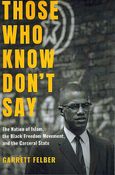Those who Know Don't Say
By: Felbert, GarrettShare
Topic: Black Muslims - US - History - Discrimination|9781469653822|
select image to view/enlarge/scroll

Can't find what you need? Have questions?
Send an email: admin@jarirbooksusa.com
Or Call: 714-539-8100
Send an email: admin@jarirbooksusa.com
Or Call: 714-539-8100
Jarirbooksusa.com
Proud to Specialize In...
Arabic Books | Arabic Children Books | Middle East & Islamic Books | Arabic Language Studies
Classical and Contemporary Islamic & Middle Eastern Studies | English-Arabic & Arabic-English Dictionaries
Proud to Specialize In...
Arabic Books | Arabic Children Books | Middle East & Islamic Books | Arabic Language Studies
Classical and Contemporary Islamic & Middle Eastern Studies | English-Arabic & Arabic-English Dictionaries
 Shop With Security
Shop With Security
Visit us on Social Media



 Bringing you the best selections in partnership with Dar al-Kitab al-Arabi USA
Visit alkitab.com
Bringing you the best selections in partnership with Dar al-Kitab al-Arabi USA
Visit alkitab.com
© 2003-2025 jarirbooksusa.com - All Rights Reserved.
Thank You for Visiting.







By provocatively documenting the interplay between law enforcement and Muslim communities, Felber decisively shows how state repression and Muslim organizing laid the groundwork for the modern carceral state and the contemporary prison abolition movement which opposes it. Exhaustively researched, the book illuminates new sites and forms of political struggle as Muslims prayed under surveillance in prison yards and used courtroom political theater to put the state on trial. This history captures familiar figures in new ways--Malcolm X the courtroom lawyer and A. Philip Randolph the Harlem coalition builder--while highlighting the forgotten organizing of rank-and-file activists in prisons such as Martin Sostre. This definitive account is an urgent reminder that Islamophobia, state surveillance, and police violence have deep roots in the state repression of Black communities during the mid-20th century.